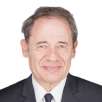Before universal adhesives were available, two major techniques were used: total-etching adhesives, which basically work with phosphoric acid etching on enamel and dentine; and self-etching adhesives, which can be used with or without the option of etching enamel selectively. Prior to the introduction of self-etching adhesives in the late 1990s, dentists used mostly total-etching techniques. While this procedure achieves strong enamel bonding, it can also be very technique-sensitive and involves several steps. As a consequence, dentists welcomed the development of simplified adhesives. In 2011, the new generation of universal adhesives was introduced, with the aim of replacing all previous generations.
The development of universal adhesives was firstly due to the success of self-etching adhesives, but total etching was still advocated. The result, a universal adhesive, must be considered a self-etching adhesive with a phosphoric acid conditioning option on enamel and/or dentine. Maximum flexibility resulting from the freedom of choice in etching technique and the preference of the practitioner was thus obtained.
CLEARFIL Universal Bond Quick, manufactured by Kuraray Noritake Dental, is a single-component light-curing bonding agent indicated for all direct and indirect restorations in combination with all etching techniques (total-etching, self-etching or selective-etching). The adhesive is also indicated for the surface treatment of zirconia- and silica-based ceramics. When compared with other one-bottle universal adhesives, CLEARFIL Universal Bond Quick exhibits RAPID BOND TECHNOLOGY. We asked Peter Schouten, Technical Manager at Kuraray Europe Benelux and a chemist with decades of experience in the dental industry, about his views on universal adhesives and CLEARFIL Universal Bond Quick.
Dental Tribune: Since the introduction of the first universal adhesive, a new generation of adhesives has been created that has enjoyed increasing popularity since then. What is your opinion about the system?
Peter Schouten: For me, the term “universal” remains debatable. There is no clear definition of a universal bonding system yet. When we look at what different manufacturers are saying about universal bonding systems, the term to me applies primarily to the etching technologies and the ability to adhere to all substrates currently used in dentistry, such as silica- or metal-based materials. In this case, we can really speak of “universal”.
What are the advantages and disadvantages of self-etching and total-etching technologies? How are universal adhesives positioned in relation to them?
In my home country of the Netherlands, there is a large group of self-etching users. In many other countries, most dentists still use the total-etching approach. And, of course, there are reliable three-step total-etching systems on the market. However, etching of dentine removes hydroxyapatite and creates a layer of collagen. Afterwards, the dentist tries his or her best to penetrate this layer again with a bonding system. Why not preserve the hydroxyapatite and create a reliable bonding to the hydroxyapatite itself? This is the basis of the gold standard two-step self-etching bonding, our CLEARFIL SE BOND. Now universal adhesives—at least CLEARFIL Universal Bond Quick—provide the advantage that dentists can use any etching technique without worrying about results that are less than optimal. It really is an open system.
How do universal adhesives perform on wet and dry dentine, as well as enamel, in combination with all etching technologies?
I am a strong believer in the self-etching technique as we have proven already. The wetness and dryness of dentine is always an issue in total-etching techniques. With CLEARFIL Universal Bond Quick, the instruction is to rinse and dry. Our universal adhesive has the capability of penetrating the dentine surface quickly and completely.
Kuraray is a pioneer in adhesive systems: the company introduced total-etching bonding in the 1970s and innovative self-etching technology in the 1990s. The secret to success of all universal adhesives seems to be the incorporation of the adhesive molecule MDP (10-methacryloyloxydecyl dihydrogen phosphate) developed in 1981 by Kuraray. What is the function of MDP?
Kuraray has over 40 years of experience in the development of phosphate monomers. In 1976, we had already developed Phenyl-P. By far the most important ingredient in our current bonding systems is the original MDP. We never would have reached the level at which we are today without this phosphate monomer. MDP is capable of creating a long-lasting bond to calcium in hydroxyapatite and to other metals. As MDP can chemically bond to Ca2+ ions, it forms stable, insoluble MDP–Ca salts present as nano-layers at the adhesive interface.
Kuraray Noritake Dental introduced CLEARFIL Universal Bond Quick at this year’s International Dental Show. According to the company, CLEARFIL Universal Bond is the best one-step adhesive ever developed. Briefly, what do you find noteworthy about the bonding agent?
The most remarkable thing is RAPID BOND TECHNOLOGY, enabling us to introduce the benefit of no waiting. This technology works in three steps: first, rapid penetration; second, fast polymerisation; and third, quick formation of a hydrophobic, hydrolytically stable bonding layer. It took our research and development lead Dr Yamato Nojiri many years to develop a cocktail of amide monomers that is superhydrophilic and turns after curing into a stable hydrophobic polymer. The addition of this amide monomer makes it possible to skip the waiting step. Fast polymerisation is achieved by a modified photoinitiator, releasing twice as many radicals in comparison with other initiators. The quickly formed stable bond derives from the combined action of MDP and the amide monomer. MDP bonds to calcium and amide monomer turns into a highly cross-linked hydrophobic polymer network.
The motto of CLEARFIL Universal Bond Quick is “Universal. Easy. Reliable.” Could you please explain that further?
I think that clinicians will be very satisfied with the bonding agent’s performance and wide indication range. It definitely will be used mainly for direct restorations with light-curing composite resins, but also for core build-ups, cavity sealing, treatment of exposed root surfaces and hypersensitive teeth. The pretreatment of the tooth can be done with any of the three etching procedures before applying this adhesive. For selective enamel etching and total-etching, phosphoric acid needs to be applied. I recommend K-ETCHANT Syringe etching gel. It is left in place for 10 seconds, followed by rinsing and drying. The product is very easy to use and not technique-sensitive. The result is a reliable bond because of the use of our proven MDP technology combined with the cross-linked hydrophobic polymer network.
Does CLEARFIL Universal Bond Quick adhere to any dental substrate (lithium disilicate, zirconia and metals)?
Yes, it does. CLEARFIL Universal Bond Quick is the ideal bonding agent in most situations. Bonding to tooth structure and to most direct and indirect filling materials can be performed with CLEARFIL Universal Bond Quick. For the pretreatment of silica-based ceramics (glass-ceramics); however, we advise the use of CLEARFIL CERAMIC PRIMER PLUS for the most optimal results.
What is known regarding combining universal adhesives with light-curing, dual-curing and self-curing composites without the use of primers? Can the dentist really combine them without any problems?
It can be used with all light-curing composites and compomers, with the exception of silorane-based composites. For use with self- and dual-cure composites, CLEARFIL DC Activator is needed. This catalyst activates the dual-curing mechanism of this adhesive. However, the addition of CLEARFIL DC Activator to the adhesive is not required when using it with CLEARFIL DC CORE PLUS or PANAVIA SA Cement Plus.
What do you see for the future of universal adhesives?
As long as we still need adhesives to bond our composites to tooth structure, I'm almost certain that single-bottle universal adhesives will become the most used systems. In vitro tests have shown good results. A universal, easy-to-use adhesive with few treatment steps and a short working time reduces the risks of errors. Of course, relevant long-term clinical research results are needed to prove the quality. Kuraray Noritake Dental, with its leading adhesive technology, will surely remain the leader in this field.
Tags:
In 1978, Kuraray Noritake Dental introduced CLEARFIL BOND SYSTEM F, the first total-etch bonding system. Through renowned products such as the CLEARFIL SE ...
No other resin cement offers such ease of use and consistency in procedure. Indeed, the unrivalled simplicity and predictability of PANAVIA V5 is nothing ...
When it comes to the aesthetic performance of restorations in the anterior region, a key aspect to consider is translucency—the ability of the material to...
Mr. Stratos Chatzichristos CDT
Dr. Gerard Chiche, Prof. Dr. Markus Blatz
Prof. Nicola Scotti, Prof. Lorenzo Breschi
RDT Aki Yoshida, DT Nondas Vlachopoulos
Dr. Mike Skramstad, Dr. Sameer Puri



 Austria / Österreich
Austria / Österreich
 Bosnia and Herzegovina / Босна и Херцеговина
Bosnia and Herzegovina / Босна и Херцеговина
 Bulgaria / България
Bulgaria / България
 Croatia / Hrvatska
Croatia / Hrvatska
 Czech Republic & Slovakia / Česká republika & Slovensko
Czech Republic & Slovakia / Česká republika & Slovensko
 France / France
France / France
 Germany / Deutschland
Germany / Deutschland
 Greece / ΕΛΛΑΔΑ
Greece / ΕΛΛΑΔΑ
 Italy / Italia
Italy / Italia
 Netherlands / Nederland
Netherlands / Nederland
 Nordic / Nordic
Nordic / Nordic
 Poland / Polska
Poland / Polska
 Portugal / Portugal
Portugal / Portugal
 Romania & Moldova / România & Moldova
Romania & Moldova / România & Moldova
 Slovenia / Slovenija
Slovenia / Slovenija
 Serbia & Montenegro / Србија и Црна Гора
Serbia & Montenegro / Србија и Црна Гора
 Spain / España
Spain / España
 Switzerland / Schweiz
Switzerland / Schweiz
 Turkey / Türkiye
Turkey / Türkiye
 UK & Ireland / UK & Ireland
UK & Ireland / UK & Ireland
 Brazil / Brasil
Brazil / Brasil
 Canada / Canada
Canada / Canada
 Latin America / Latinoamérica
Latin America / Latinoamérica
 USA / USA
USA / USA
 China / 中国
China / 中国
 India / भारत गणराज्य
India / भारत गणराज्य
 Japan / 日本
Japan / 日本
 Pakistan / Pākistān
Pakistan / Pākistān
 Vietnam / Việt Nam
Vietnam / Việt Nam
 ASEAN / ASEAN
ASEAN / ASEAN
 Israel / מְדִינַת יִשְׂרָאֵל
Israel / מְדִינַת יִשְׂרָאֵל
 Algeria, Morocco & Tunisia / الجزائر والمغرب وتونس
Algeria, Morocco & Tunisia / الجزائر والمغرب وتونس
 Middle East / Middle East
Middle East / Middle East
:sharpen(level=0):output(format=jpeg)/up/dt/2024/04/Treating-periodontal-disease-reduces-atrial-fibrillation-recurrence.jpg)
:sharpen(level=0):output(format=jpeg)/up/dt/2024/04/3Shape-charts-sustainable-course-with-release-of-comprehensive-sustainability-report-2023.jpg)
:sharpen(level=0):output(format=jpeg)/up/dt/2024/04/Zumax-Medical-Image-1.jpg)
:sharpen(level=0):output(format=jpeg)/up/dt/2024/04/IDEM-2024-Wraps-up-its-13th-edition-with-record-breaking-success.jpg)
:sharpen(level=0):output(format=jpeg)/up/dt/2024/04/Envista-names-Paul-Keel-new-CEO-1.jpg)








:sharpen(level=0):output(format=png)/up/dt/2023/11/Patent%E2%84%A2-Implants-_-Zircon-Medical.png)
:sharpen(level=0):output(format=png)/up/dt/2013/04/Dentsply-Sirona.png)
:sharpen(level=0):output(format=png)/up/dt/2014/02/A-dec.png)
:sharpen(level=0):output(format=png)/up/dt/2014/02/EMS.png)
:sharpen(level=0):output(format=png)/up/dt/2023/03/ACTEON_NEW-logo_03-2024.png)
:sharpen(level=0):output(format=png)/up/dt/2014/02/kuraray.png)
:sharpen(level=0):output(format=jpeg)/up/dt/2018/01/peter-schouten.jpg)
:sharpen(level=0):output(format=gif)/wp-content/themes/dt/images/dt-user.gif)
:sharpen(level=0):output(format=jpeg)/up/dt/2018/01/clearfil-universal-bond-quick-products-news.jpg)
:sharpen(level=0):output(format=jpeg)/up/dt/2018/01/Panavia_Post_pre_treatment.jpg)
:sharpen(level=0):output(format=jpeg)/up/dt/2018/01/katana-zirconia.jpg)











:sharpen(level=0):output(format=jpeg)/up/dt/2024/04/What-to-do-to-avoid-air-bubbles.jpg)
:sharpen(level=0):output(format=jpeg)/up/dt/2024/03/Flowable-injection-technique.jpg)
:sharpen(level=0):output(format=jpeg)/up/dt/2024/02/UNILATERAL-BITE-ELEVATION-fig1.jpg)
:sharpen(level=0):output(format=jpeg)/wp-content/themes/dt/images/3dprinting-banner.jpg)
:sharpen(level=0):output(format=jpeg)/wp-content/themes/dt/images/aligners-banner.jpg)
:sharpen(level=0):output(format=jpeg)/wp-content/themes/dt/images/covid-banner.jpg)
:sharpen(level=0):output(format=jpeg)/wp-content/themes/dt/images/roots-banner-2024.jpg)
To post a reply please login or register